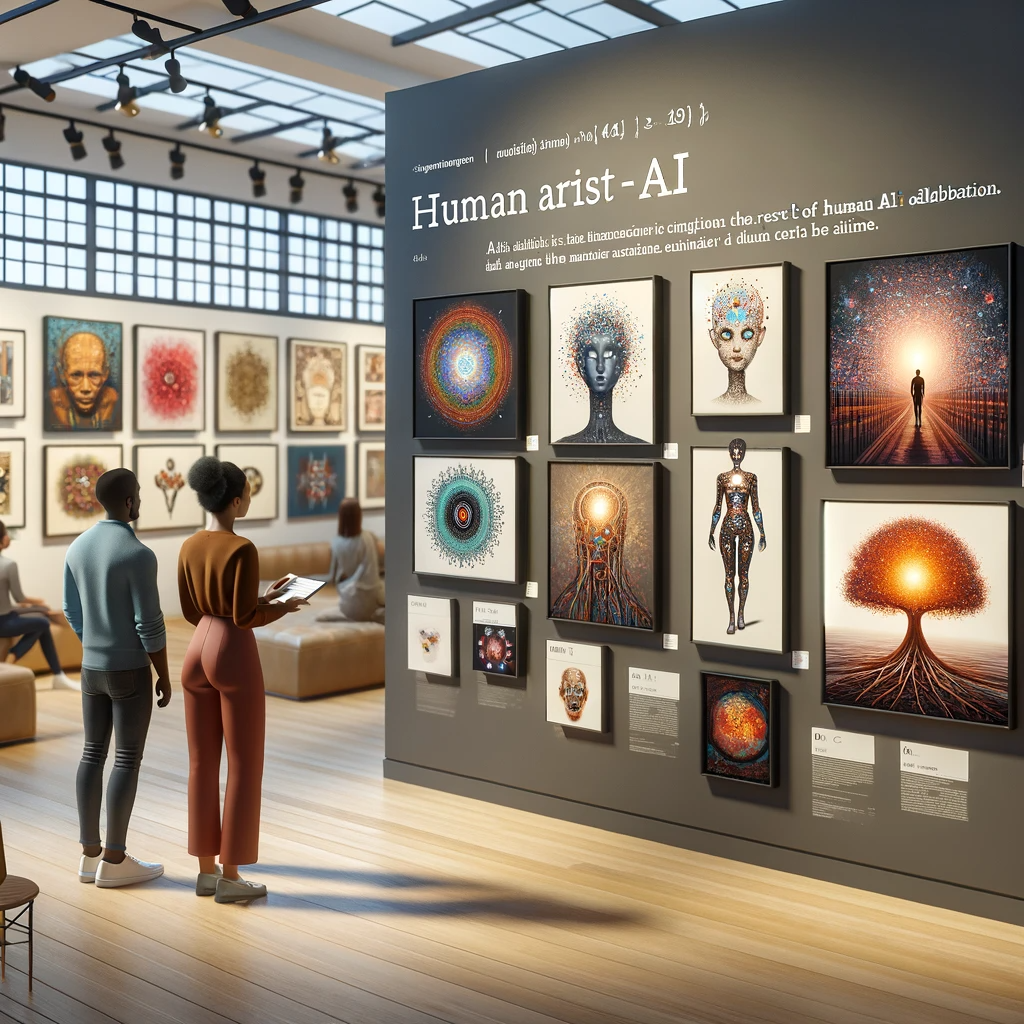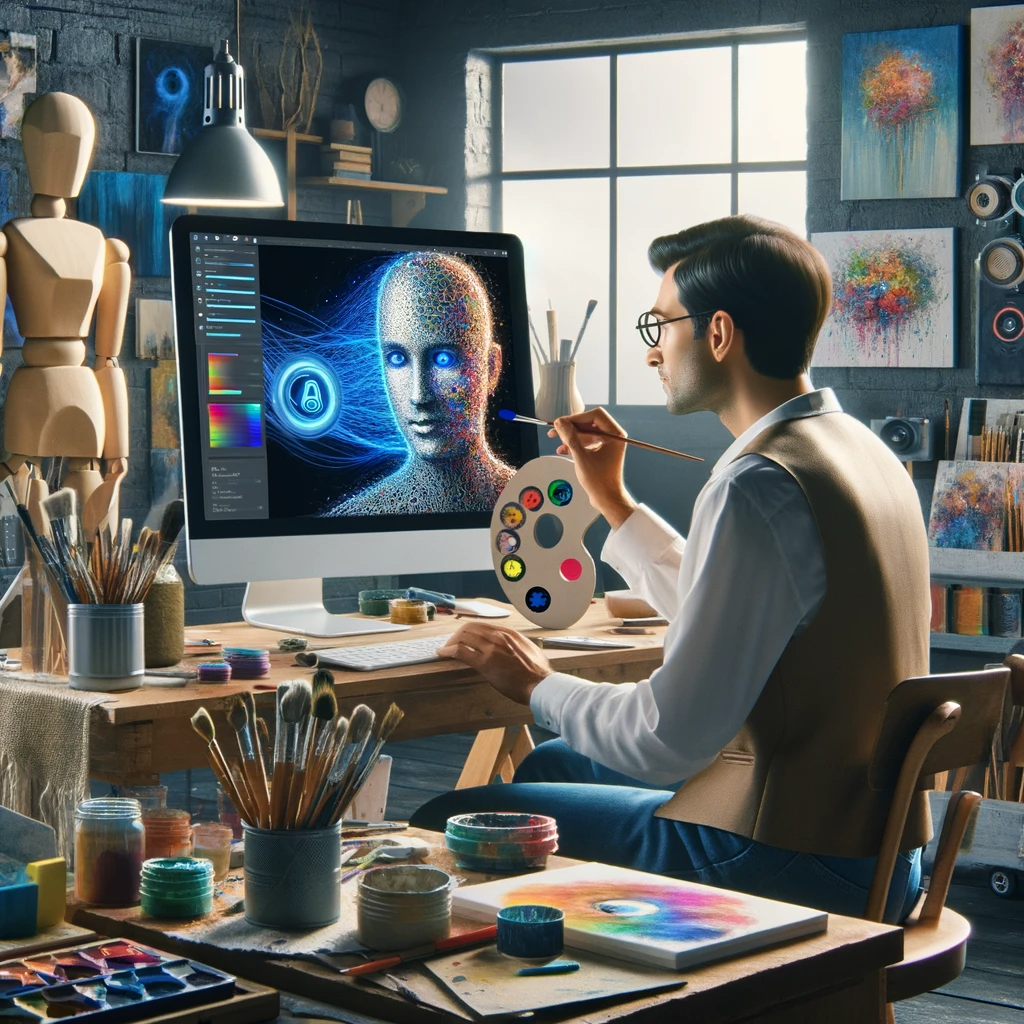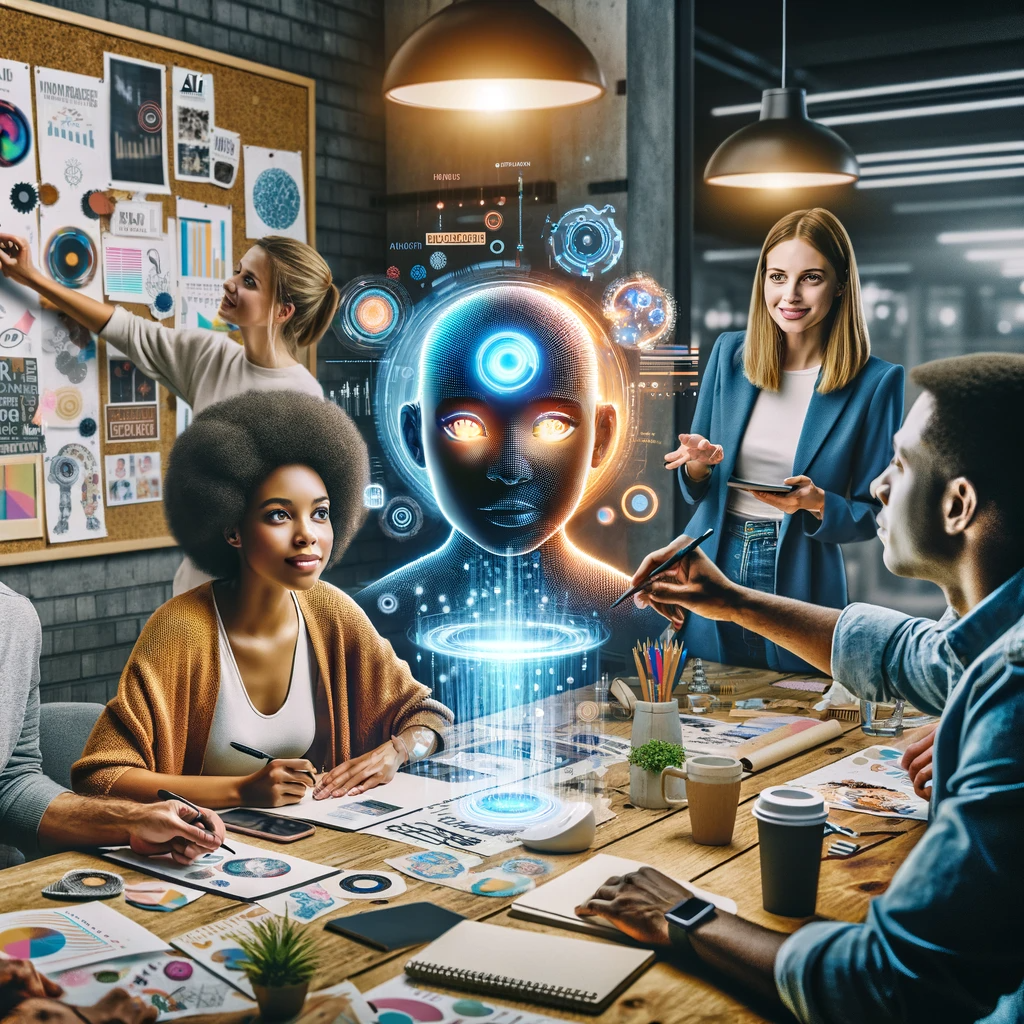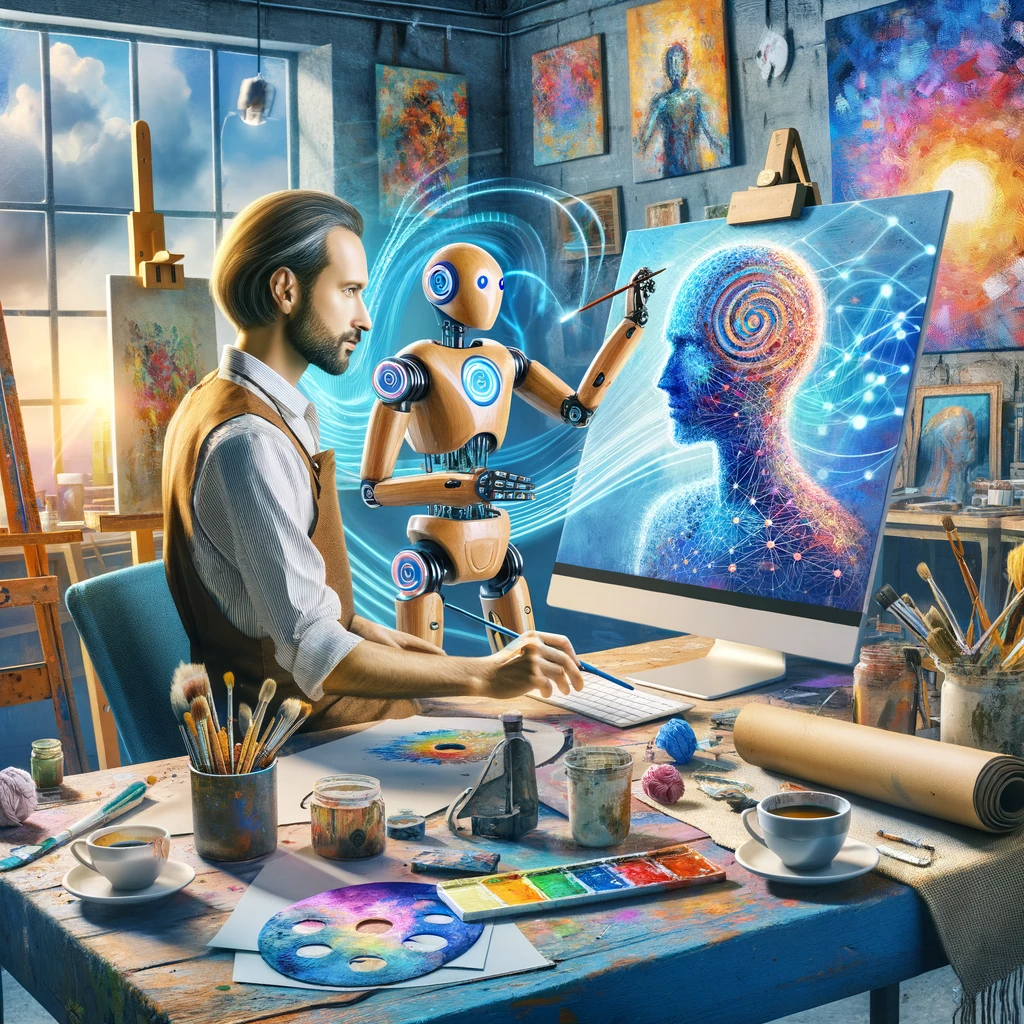The integration of Artificial Intelligence (AI) in the realm of creative arts marks a fascinating evolution in the relationship between technology and artistic expression. Historically, art has often embraced technological advancements, from the use of perspective in Renaissance painting to the digital revolution in contemporary music production. Today, AI emerges as the latest frontier in this ongoing synergy, offering new tools and possibilities for creative exploration.
AI in the arts is not just about automating processes but about redefining the boundaries of creativity itself. With capabilities ranging from generating complex visual patterns to composing music and even writing poetry, AI systems are challenging our traditional notions of the creative process. This technological leap forward brings us to a pivotal question: Can AI not only replicate but also collaborate with human artists to enhance creativity and produce truly innovative works? Does the fusion of human intuition with AI’s computational power herald a new era in artistic creation?
capabilities ranging from generating complex visual patterns to composing music and even writing poetry, AI systems are challenging our traditional notions of the creative process. This technological leap forward brings us to a pivotal question: Can AI not only replicate but also collaborate with human artists to enhance creativity and produce truly innovative works? Does the fusion of human intuition with AI’s computational power herald a new era in artistic creation?
In this article, we will explore the intersection of AI and art, delving into the creative potential of AI, its impact on the artistic process, and the challenges and criticisms it faces. We will also speculate on the future implications for artists and the art world. Through this exploration, we aim to uncover the depths and limits of AI’s role in the evolution of creative expression.
The Intersection of AI and Art
The evolution of AI technologies in the arts represents a remarkable convergence of science and creativity. Initially developed for tasks like data analysis and automation, AI has gradually made its way into the artistic arena, opening new avenues for creative expression. In the realm of visual arts, AI algorithms are used to generate intricate patterns and images, often creating styles that no human artist has conceived. Programs like Google’s DeepDream transform images into surreal, dream-like compositions, illustrating how AI can reinterpret visual data in unique ways.
In music, AI systems like AIVA (Artificial Intelligence Virtual Artist) compose original compositions, learning from a vast database of classical music to create pieces that are both fresh and stylistically traditional. Similarly, in literature, AI has been used to write poetry and prose, experimenting with language and narrative structures in ways that are both innovative and evocative.
AI is currently used in creative processes as a tool for augmenting human creativity, often handling the more laborious or data-intensive aspects of art creation. This allows human artists to focus on the conceptual and interpretive facets of their work. AI’s role varies from being a co-creator, where it actively contributes to the creation of art, to a facilitator, where it assists in the realization of human-conceived ideas.
The Creative Potential of AI
AI’s capabilities in generating original art are not just theoretical but have been demonstrated in various collaborative projects. One notable example is the Next Rembrandt project, where a computer was fed data from Rembrandt’s paintings and used it to create an entirely new work in the artist’s style. This project showcased AI’s ability to analyze and replicate complex artistic styles, raising questions about creativity and originality.
Another case is the collaboration between AI and human artists in live performances. AI algorithms can respond to music played by human musicians in real-time, creating a dynamic and interactive creative experience. This interaction opens new possibilities for improvisation and composition that were previously unattainable.
These collaborations provide insights into how AI algorithms can inspire human artists. By offering new perspectives and possibilities, AI can push artists to explore beyond their usual creative boundaries, leading to innovative and uncharted artistic expressions.
AI’s Impact on the Creative Process
AI’s influence on the traditional artistic process is multifaceted. On one hand, AI can serve as a powerful tool, handling tasks like color correction in photography or suggesting harmonic progressions in music composition. On the other hand, AI can act as a collaborator, bringing its own ‘ideas’ to the creative table. This duality challenges our understanding of the creative process, blurring the lines between tool and creator.
The debate on AI as a tool versus AI as a collaborator hinges on how much creative control and input AI possesses in the artistic process. While some artists use AI as an advanced tool, others view it as a creative partner that contributes actively to the creation of art.
AI’s role in expanding the boundaries of artistic expression is undeniable. It enables the exploration of complex patterns and scenarios that are difficult for human minds to conceive or execute. This expansion is not just in the creation of new forms of art but also in the reimagining of traditional art forms through a new, computational lens.

Challenges and Criticisms
Despite the potential of AI in the arts, there is substantial skepticism about its role. Critics argue that AI, lacking consciousness and emotional depth, cannot truly replicate the human creative process. This skepticism often centers around ethical considerations, particularly concerning the authenticity and originality of AI-generated art. There are concerns that AI might merely replicate or remix existing styles and ideas, rather than creating something genuinely new and original. This brings into question the definition of creativity and whether it is an exclusively human trait.
Another significant criticism is the perceived loss of the human touch in AI-generated art. The emotional connection and personal expression conveyed through human-created art are seen as irreplaceable. The fear is that AI, with its algorithmic basis, may produce works that are technically impressive but emotionally shallow, lacking the nuances and imperfections that often give human-made art its character and appeal.
These challenges highlight the ongoing debate about the role and limits of technology in creative domains and raise important questions about the future of art in an AI-integrated world.
Future Implications for Artists and the Art World
Looking to the future, the relationship between AI and human artists appears poised for deeper integration. This collaboration might lead to new art forms and styles that are currently unimaginable, pushing the boundaries of creativity. In the art market, AI-created works have already begun to make an impact, seen in auctions and exhibitions. This trend could redefine the value and perception of art, influencing what collectors and the public consider valuable or noteworthy.
In art education, there may be a shift towards incorporating AI into curricula, teaching artists how to collaborate with AI tools effectively. This integration could expand the skillset of future artists, enabling them to harness AI’s capabilities for creative expression.
The long-term impact of AI on artistic innovation and creativity could be profound. AI might become a catalyst for a new artistic renaissance, where the fusion of technology and human creativity leads to unprecedented explorations of expression and aesthetics.

Concluding Thoughts
AI’s foray into the creative arts marks a significant development in the history of art and technology. While AI can enhance human creativity by providing new tools and perspectives, the balance between AI and human input in art remains a crucial consideration. The future of AI in the creative arts is ripe with possibilities, but it also raises fundamental questions about the nature of creativity and the role of human uniqueness in art. As we stand at this crossroads, one can’t help but wonder: Will AI redefine what we consider art, or will it remain a tool to extend the capabilities of human artists? The answers to these questions will shape not only the future of art but also our understanding of the relationship between humans, creativity, and technology.
